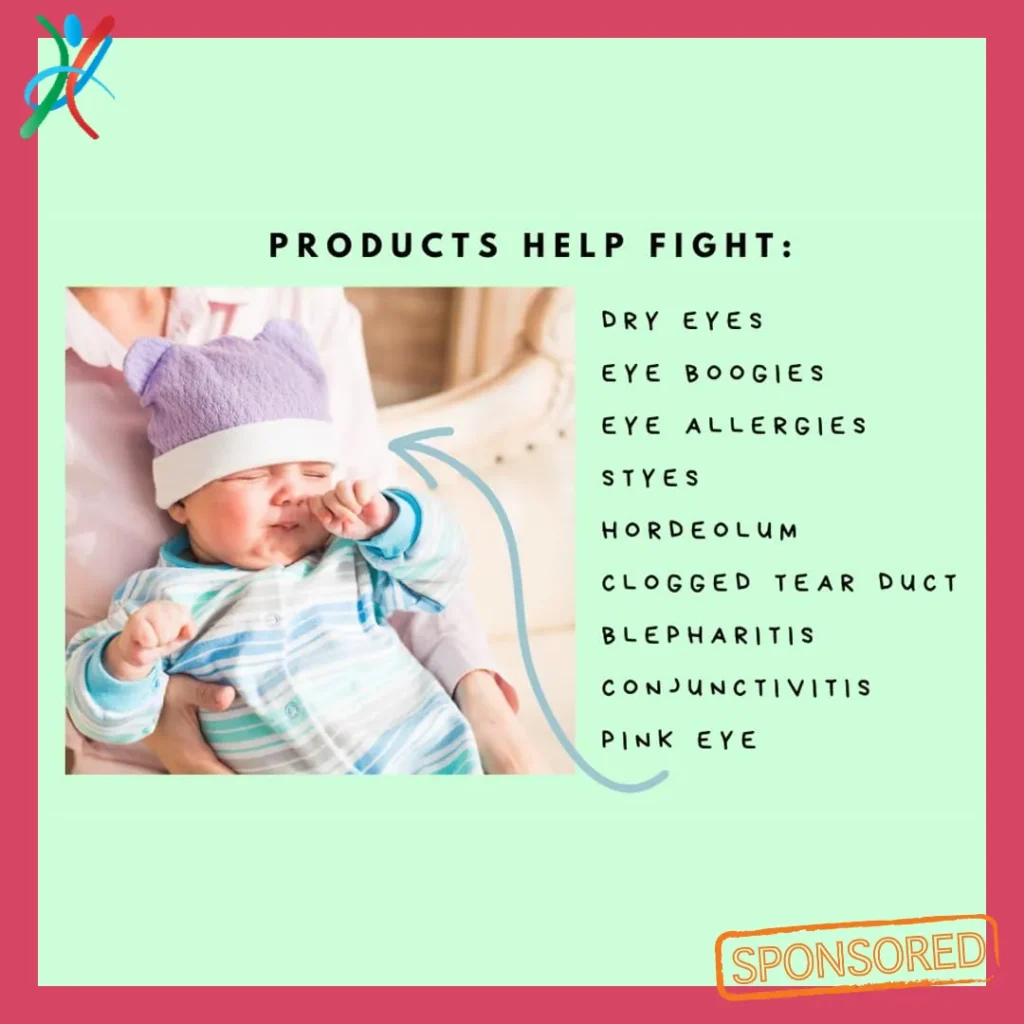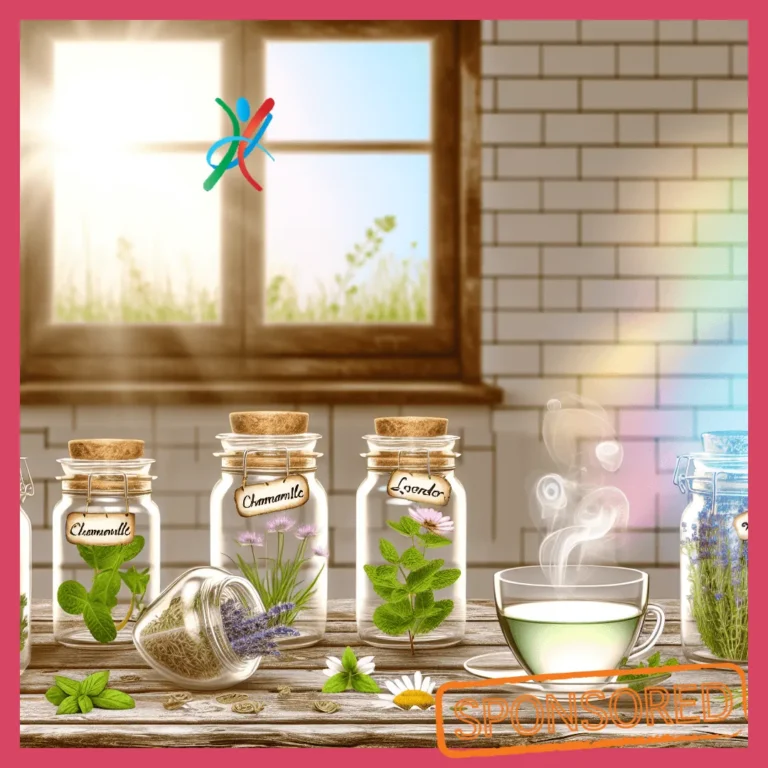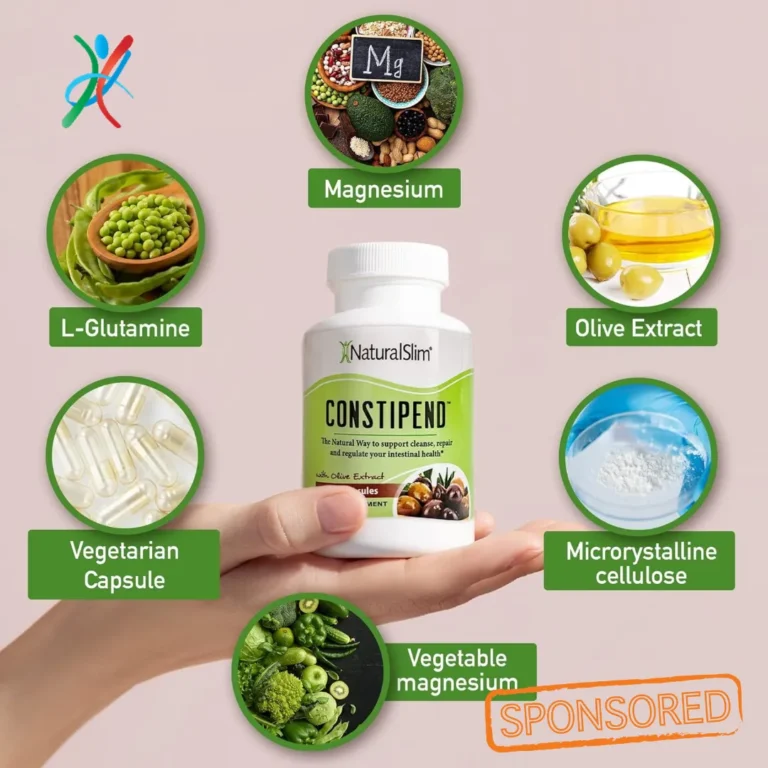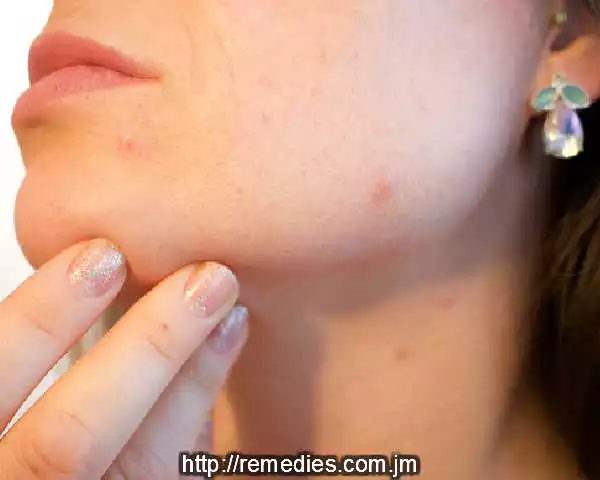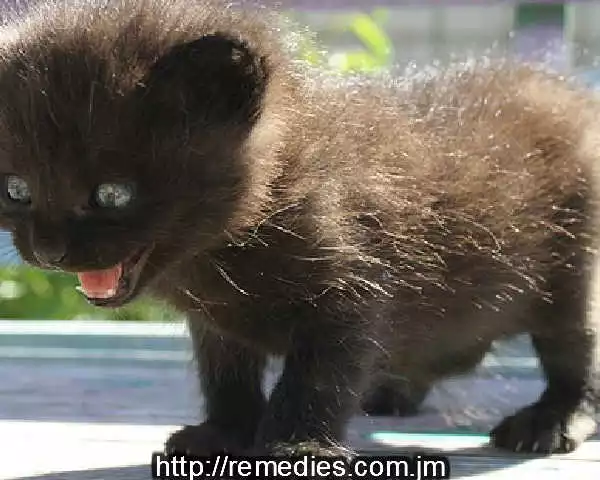Remedies for Pink Eye in Kids
Every parent dreads the unmistakable signs of pink eye in their little one’s gaze.
Pink eye, or conjunctivitis in medical terms, is not just uncomfortable for children—it’s a health rite of passage that most will experience.
From redness to itchiness, the symptoms are as clear as day.
Understanding its forms, from bacterial to viral, and the resultant symptoms, is crucial for any caretaker.
Yet it’s the practical, at-home strategies and medical interventions that offer solace in the face of this common affliction.
This article delves into the realms of soothing compresses, imperative hygiene practices, and the judicious use of medical interventions.
Read on to uncover a comprehensive guide on managing your child’s pink eye and when it’s time to seek professional advice.
Overview of Pink Eye in Kids
Pink eye, medically known as conjunctivitis, is a condition that many parents become familiar with, given its common occurrence in children.
It manifests as inflammation and reddening of the conjunctiva, the transparent membrane that lines the eyelid and eye surface.
This inflammation is most often the result of an infection, which can rapidly spread through direct contact, exposure to contaminated objects, or respiratory infections.
The signs to watch out for in kids include a distinct red or pink appearance to the whites of the eyes, accompanied by swelling, eye discharge that can vary in color, and a general sensitivity to light.
Due to its contagious nature, it’s essential for children with infectious conjunctivitis to practice good hygiene, avoid sharing personal items like towels and washcloths, and to remain out of school or communal environments until the condition resolves, which typically happens within a week or so.
Definition of Pink Eye
Pink eye, or conjunctivitis, is recognized as the inflammation of the conjunctiva resulting in the eye appearing red or pink.
This inflammation can lead to several symptoms such as a feeling of puffiness around the eyes, the formation of crust from discharge especially upon waking, and the presence of varying amounts of fluid discharge.
Conjunctivitis can come about acutely and resolve quickly, typically within less than four weeks, or it can persist as a chronic issue, lasting for a longer duration.
The condition is brought on by various causes like viral or bacterial infections, or allergic reactions.
While pink eye can cause discomfort, such as burning or itching sensations, swelling of the eyes, and watery discharge, it’s usually not a serious health threat and tends to resolve by itself within 7 to 10 days, often without the need for medical treatment.
Common Causes of Pink Eye in Kids
When diagnosing pink eye in children, it’s crucial to consider the multitude of potential causes.
Common culprits include seasonal allergies, bacterial infections from common flora or following eye injuries, irritants like smoke or chlorine in swimming pools, using expired or contaminated eye drops, and reactions to wearing contact lenses.
Viral infections, particularly those also responsible for ailments like the common cold, can precipitate symptomatic inflamed and watering eyes alongside upper respiratory symptoms like a runny nose or cough.
With bacterial conjunctivitis, you might notice that the child’s eyelids and conjunctiva become red and swollen, often accompanied by thick, pus-like discharge.
Conversely, allergic conjunctivitis presents similarly to viral forms, with key identifiers being the allergens, like pollen or pet dander, triggering the response.
While antibiotics can help in bacterial cases, pink eye stemming from a virus will generally improve without any formal treatment after up to 10 days.
Symptoms of Pink Eye in Kids
The hallmark signs of pink eye in children include a noticeable reddening or pink coloring of the eyes, an incessant itch, and excess tearing.
Not uncommonly, kids may wake up with their eyes “glued shut” due to the accumulation of whitish, yellowish, or even greenish discharge.
In addition to eye discharge, children with pink eye might complain of their eyelids feeling swollen, an irritating sensation as if an object is in their eye, or an aversion to bright lights.
More severe symptoms, though rarer, can include crusty debris on the eyelids, temporary blurred or blurry vision, and occasionally an enlarged lymph node in front of the ear.
For those wearing contact lenses, discomfort while wearing them can be a discernible sign of conjunctivitis, compelling a switch to glasses until the issue is fully resolved.
Home Remedies for Pink Eye in Kids
When it comes to treating pink eye in kids at home, there are several simple and effective remedies that can help alleviate discomfort and prevent the spread of infection.
It’s important to complement these remedies with good hygiene practices and proper medical care, if necessary.
Warm Water Compresses
Applying a warm, moist compress can offer immediate relief for a child suffering from pink eye.
To provide the most benefit, warm compresses should be used for short periods, several times throughout the day.
Simply soak a clean washcloth in warm (not hot) water, wring it out, and place it gently over the child’s closed eyelids.
Remember to use a different washcloth for each eye to prevent cross-contamination.
This method can help reduce swelling, cleanse away discharge, and soothe the irritated eyes.
Use of Artificial Tears
Over-the-counter artificial tears can be a soothing salvation for irritated, dry eyes due to pink eye.
These lubricating drops help moisten the eyes and relieve symptoms like soreness and stickiness.
Ensure you choose artificial tears formulated for children and avoid drops designed to reduce redness, which can sometimes worsen the condition.
Follow the package instructions for dosage, and never share droppers between individuals to avoid spreading the infection.
Clean Washcloth for Eye Discharge
Eye discharge is a common and distressing symptom of pink eye in kids.
Gently cleaning the eyes with a clean, warm washcloth can help manage this issue.
It’s best to wipe from the inside (near the nose) to the outside of the eye and use a fresh cloth for each session.
Warm compresses not only help to clean the eyes but also aid in soothing any associated discomfort.
Cool Compresses for Swollen Eyelids
Swelling and inflammation of the eyelids can be reduced with the aid of cool compresses.
Using a clean cloth soaked in cold water, gently apply the compress to your child’s closed eyelids to diminish swelling and provide a soothing effect.
As with warm compresses, ensure that separate cloths are used for each eye and that they are thoroughly cleaned after each use to prevent spreading the infection.
Importance of Proper Hygiene
Proper hygiene is of utmost importance in managing and preventing the spread of pink eye.
Frequent handwashing with soap and water or the use of an alcohol-based hand sanitizer is essential.
Kids should be encouraged to avoid touching their eyes and to use clean towels, linens, and face cloths daily.
Additionally, glasses and contact lens cases should be regularly disinfected, and personal items like makeup should never be shared.
Avoidance of Eye Rubbing
One of the most critical aspects of preventing the spread of pink eye is teaching children not to rub their eyes.
Not only can this exacerbate irritation and soreness, but it can also spread the infection to others.
For kids with allergic conjunctivitis, rubbing can intensify the allergic response.
Advising children to avoid touching their eyes and using distractions such as a cool or warm compress may help to keep their hands away from their eyes.
Implementing these home remedies effectively can provide your child with relief from pink eye symptoms.
However, it’s crucial to seek medical advice if symptoms worsen or do not improve, as prescription treatments may be necessary, especially in the case of bacterial conjunctivitis.
Always remember that while home remedies can be helpful, they do not replace professional medical evaluation and treatment where it’s indicated.
Medical Treatments for Pink Eye in Kids
When a child is diagnosed with pink eye, also known as conjunctivitis, proper medical treatment depends on the underlying cause of the condition.
Pink eye can be the result of bacterial infections, allergic reactions, or viral illnesses such as the common cold or a respiratory infection.
The distinction is important because the treatment approaches differ significantly.
Antibiotic Eye Drops for Bacterial Conjunctivitis
For cases of bacterial conjunctivitis in children, antibiotic eye drops or ointments are the standard treatments prescribed by healthcare professionals.
These antibiotics aim to eliminate the bacteria responsible for the infection, thereby alleviating the symptoms and reducing the likelihood of contagion.
The use of these medications typically spans a period of five to seven days, but it’s not uncommon for improvement to be noticed within two to five days, even without antibiotics.
However, in severe cases, particularly those not responding to standard treatments, topical corticosteroids may also be prescribed to help manage inflammation.
To prevent re-infection, it’s recommended to dispose of items that may be contaminated, such as disposable contacts, eye makeup, and certain personal items.
Allergy Medications for Allergic Conjunctivitis
Children suffering from allergic conjunctivitis may find relief through a prescription of anti-allergy medications, which come in various forms including pills, liquids, or eye drops.
These medications are designed to target and alleviate the symptoms associated with allergic reactions, such as itching, redness, and swollen eyelids.
Parents should administer these treatments as directed by a pediatrician to provide their child with the optimal benefit and comfort.
In treating allergic conjunctivitis, it may be necessary to use a combination of allergy medications and home remedies like cool compresses to significantly improve the condition.
Viral Conjunctivitis: No Antibiotic Treatment
On the other hand, when a child presents with viral conjunctivitis, antibiotic treatment is not an effective option because antibiotics do not kill viruses.
Instead, this category of pink eye requires supportive care, focusing on alleviating symptoms as the body naturally fights off the virus.
Remedies can include the use of lubricating eye drops to soothe dryness and irritation, as well as antihistamines for relief from severe itching or allergy-like symptoms.
Since viral conjunctivitis is self-limiting, it should resolve within a few days to a couple of weeks.
Nonetheless, on rare occasions, certain types of viral pink eye caused by more serious viruses like herpes simplex may necessitate antiviral medication.
Every child and case of pink eye is unique, so it’s paramount for parents to seek medical care to receive a proper diagnosis and treatment plan.
In addition to medical interventions, maintaining hygienic practices is crucial in managing pink eye.
This includes regular handwashing, avoidance of eye rubbing, and keeping the child’s environment clean.
If symptoms persist or worsen, it’s important to consult a healthcare provider for further medical advice and intervention.
Preventive Measures for Pink Eye in Kids
Pink eye, or conjunctivitis, is an infection or inflammation of the conjunctiva, commonly affecting children.
Managing outbreaks involves both medical treatment and preventive approaches to inhibit the spread of the contagious agents.
There are several proactive steps that can be taken to reduce the risk of children contracting or spreading pink eye.
Teaching Proper Hand Hygiene
Hand hygiene is critical in preventing the transmission of conjunctivitis.
Parents and caregivers should reinforce the habit of frequent handwashing with children, particularly before and after touching the eyes.
Teaching children to wash their hands with warm water and soap for at least 20 seconds can significantly decrease the risk of infection.
Additionally, adults should model good hand hygiene by thoroughly cleaning their own hands after providing care to an infected child.
In settings where soap and water are not available, an alcohol-based hand sanitizer can serve as an alternative.
It is also advisable to encourage children not to touch their face, especially the eyes, to protect against pink eye and other infections.
Discard and Replace Disposable Contact Lenses Regularly
For children who use contact lenses, pink eye prevention can be significantly improved by properly managing these devices.
Should a child develop conjunctivitis, dispose of the current pair of disposable contacts immediately to prevent prolonging the infection.
Once the child has recovered and it’s safe to resume contact lens wear, provide them with a fresh new pair.
Ensure that the contact lens case and lenses— if not disposable —are meticulously cleaned according to the eye care professional’s instructions before they are used again.
This simple measure can go a long way in preventing reinfection and maintaining eye health.
Avoid Sharing Personal Items
To curtail the spread of conjunctivitis, it’s very important to avoid sharing personal items that come into contact with the eyes.
This includes eye drops, makeup, towels, bed linens, and face cloths.
Children should have their own clean, individual towels and washcloths that are not shared with others.
Additionally, eyeglasses and cases should be disinfected, and contact lens solutions and containers should not be shared under any circumstances.
By maintaining strict personal hygiene and not sharing these personal items, the risk of spreading pink eye can be minimized.
Avoid Close Contact with an Infected Person
Since pink eye can be highly contagious, limiting close contact with someone who is infected can prevent the disease’s transmission.
Educate children on the importance of not touching their friends’ faces or eyes and discourage direct physical contact with peers who have pink eye symptoms.
In the household, ensure regular cleaning and disinfection of commonly touched surfaces such as doorknobs, countertops, and toys.
These measures, coupled with the aforementioned personal item precautions, can effectively reduce potential exposure to the agents causing pink eye.
Keep Child at Home During Illness
When a child is diagnosed with conjunctivitis, keeping them at home from school, daycare, or camp until they have either seen a doctor or been on antibiotics for 24 hours is a responsible approach to limiting the spread of the infection.
This time at home should be used to reinforce good hygiene practices, such as frequent handwashing, and to ensure thorough laundering of the child’s bedding and any cloths or towels used.
By following these guidelines, parents can assist in managing the spread of pink eye and help protect the community.
When to Seek Medical Care for Pink Eye in Kids
Pink eye, though often a mild condition, can sometimes become a serious medical issue that demands prompt attention, especially in children.
It is essential for parents to know when to seek medical care for their little ones.
For infants under three months old with pink eye symptoms, immediate medical consultation is necessary due to their higher risk for serious infections.
Parents should promptly schedule an appointment with a pediatrician if a child exhibits increasing pain, blurred vision, extreme sensitivity to light, worsening of symptoms after a week, or the presence of excessive discharge in the form of pus or mucus.
Additionally, if a child has a fever, a weakened immune system—as in cases of HIV or cancer treatments—medical care becomes more crucial.
For newborns presenting pink eye symptoms, urgent medical care is imperative.
While pink eye due to sexually transmitted infections (STIs) in children is rare, it is indeed serious and must be addressed similarly to other forms.
Moreover, symptoms that may initially appear as pink eye could be due to other conditions, such as a stye or eye inflammation, which require a doctor’s evaluation to ensure the appropriate treatment strategy.
Severe Pain or Blurred Vision
Parents should not overlook when a child complains of severe eye pain or experiences blurred vision alongside pink eye.
Over-the-counter pain-relieving medications, such as ibuprofen, can temporarily manage pain, but professional medical evaluation is still necessary.
If a child has severe symptoms, a doctor may prescribe topical corticosteroids to reduce inflammation and redness.
Persistent discomfort in the child’s eye might be alleviated with the appropriate dosage of acetaminophen (Tylenol®) or ibuprofen.
For cases with excessive inflammation, additional medications like antihistamines may be recommended.
Vision Loss or Sensitivity to Light
When a child exhibits sensitivity to light or any changes in vision, such as blurriness or double vision, it is a red flag that requires immediate medical attention.
Sensitivity to indoor light in particular can signify a grave condition with potential risk to the child’s eyesight.
In some cases, such symptoms are indicative of overarching health issues, including the possibility of a stroke or brain tumor, and should never be taken lightly because they are often associated with significant and potentially irreversible damage to the eye.
Prolonged or Worsening Symptoms
Pink eye symptoms that persist beyond seven days, or that deteriorate despite initial treatment, are concerning.
If signs such as increased pain, heightened blurred vision, excessive pus or mucus, or additional symptoms such as fever or body aches develop, it is critical to consult with a healthcare provider.
Such indicators may point to a potential secondary infection and should not be ignored, as prolonging medical evaluation might lead to unnecessary complications.
Underlying Medical Conditions
Children with underlying medical conditions like diabetes, cancer, heart disease, or HIV/AIDS are more vulnerable due to compromised immunity and, as such, have a reduced capacity to fight infections.
Similarly, the use of steroid medications, substance abuse, chemotherapy, radiation therapy, or medication for autoimmune diseases may weaken a child’s immune defenses.
In such instances, the standard guidelines for pink eye might not suffice, and medical care should be sought earlier in the illness for personalized medical advice and treatment options.

